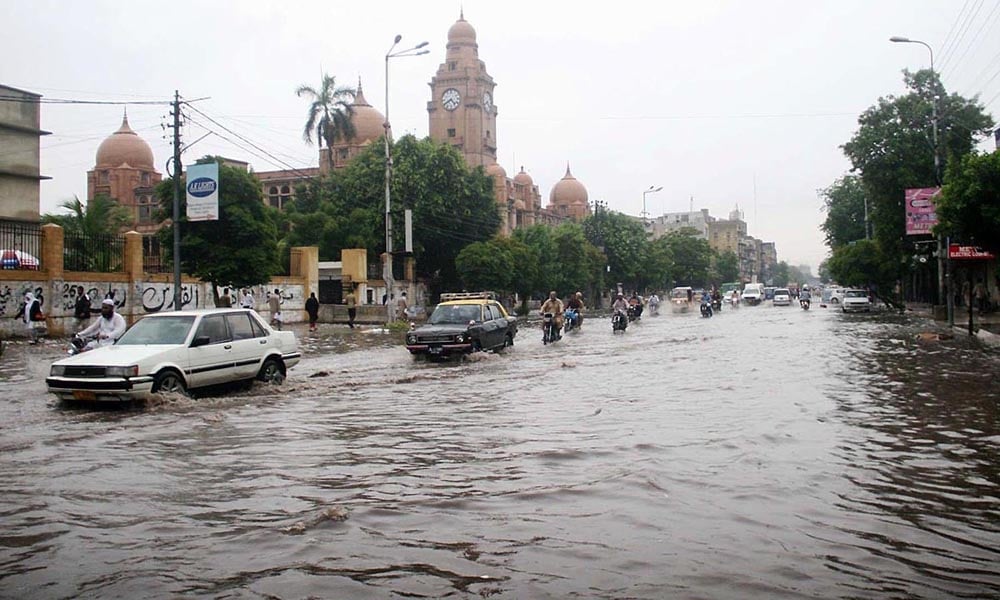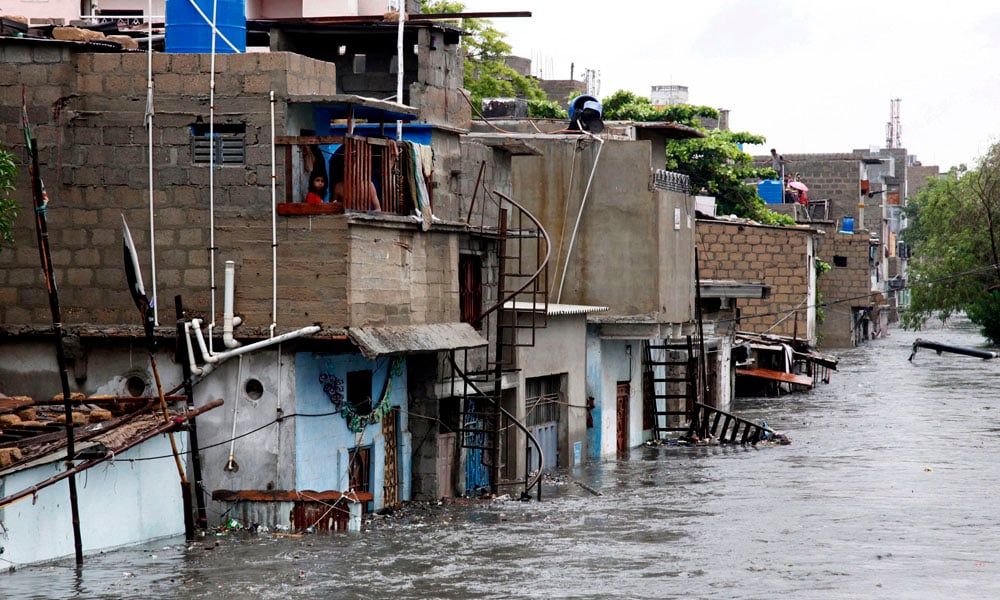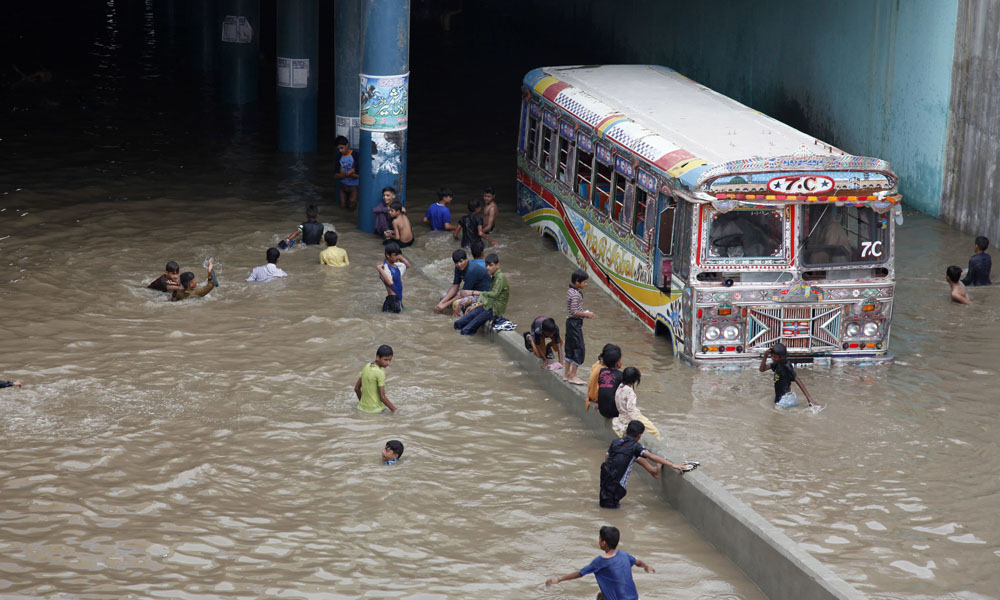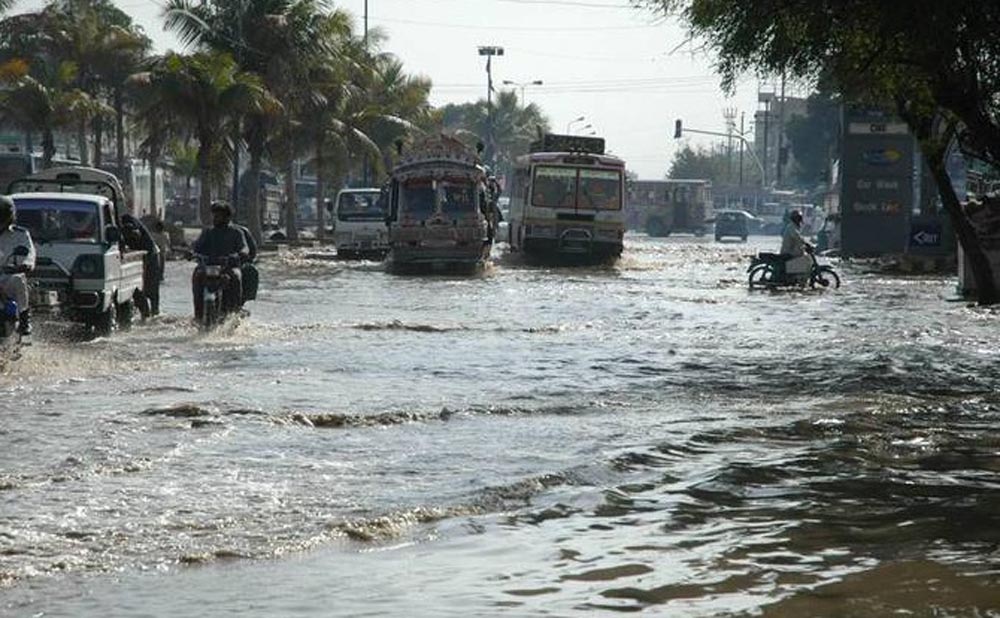KARACHI: In late August, a month’s worth of rain fell on Pakistan’s southern port city of Karachi in two days, leaving residents wading through waist-deep water, amid stalled vehicles and the bodies of dead animals floating through the streets.
An estimated 40 people died, and power, phones and water supplies were disrupted for days, in a disaster believed to have caused 300 billion Pakistan rupees ($2.8 billion) in damage.

Now Karachi city and Sindh province authorities are creating the city’s first flood management plan, in an effort to ensure such a disaster doesn’t happen again.
At the centre of the plan is an effort to clear the city’s huge storm water drainage system, which has gradually become blocked with trash and seen outlets to the sea constricted by illegal construction along drainage channels.
“Reckless development activities around the city’s storm water drains and sewer system are now literally choking the city’s natural drainage systems, the impact of which is more pronounced urban flooding, as witnessed in the city in August,” said Noman Ahmed, an urban planner and chairman of the architecture and planning department at the NED University of Engineering and Technology in Karachi.
BLOCKED DRAINS

Until recently, Karachi’s drainage arteries, which snake through the city’s 18 town areas, have worked more or less effectively to carry both rainwater and wastewater from homes, businesses and industries through the city and to flush the effluent – most of it untreated – out to sea.
But the fast-growing metropolis now produces 12,000 tonnes of garbage each day, with that expected to grow to 16,000 tonnes by 2020, according to the Sindh Solid Waste Management Board.
Of that, “only 10 percent of the trash is collected, leaving the remaining to end up in the city’s drainage and sewerage systems for want of adequate funds,” said A.D. Sanjani, the board’s managing director.
He said collecting and disposing of all the waste at landfills would cost about $276,000 a day – money the city does not have to spend.
The result of that shortfall became evident after 100 mm (4 inches) of monsoon rain fell on Karachi on Aug. 30 and 31, leaving almost 70 percent of the city – Pakistan’s economic hub – with waist-deep flooding.
Businesses in central Karachi shut for three days, and many in low-lying areas were out of operations for weeks.
Officials at the Karachi Chamber of Commerce and Industry estimate that that the disaster caused $2.8 billion in damages to sodden industrial areas, corporate offices, business centres, homes and public transports networks, and inundated over 20,000 shops in a variety of markets.
Karachi produces close to half of Pakistan’s national income and tax revenue, said M. Ashraf Janjua, a former deputy government of the State Bank of Pakistan.
Abdul Rashid, director of the Pakistan Meteorological Department’s office in Karachi, said the late August rainfall wasn’t so heavy it should have caused such widespread flooding.
The city survived two heavier monsoon rainfall spells – of 200mm in 1977 and 166mm in 1979 - without serious inundation, he said. This year’s disaster, he said, was a manmade problem.
In its summer monsoon outlook for this year, released in June, his agency warned of likely erratic monsoon rains that could trigger floods. But city authorities failed to clear clogged drainage networks in time, the scientist said.
“Had city authorities cleansed the drainage system, the accumulation of rainwater could have avoided turning into massive urban flooding, the worst disaster in almost the last three decades,” Rashid said.
PLAN TO CUT RISKS

Karachi Metropolitan Corporation Mayor Washim Akhtar said the flooding has woken up the provincial government to the city’s growing flood risk and to the need to put in place a plan to stave off such disasters in the future.
That plan is now being developed by metropolitan and provincial officials, with backing from non-governmental organisations, he said.
“With the help of the plan now being framed, we can at least mitigate the impacts of such extreme events on people, their livelihoods, public infrastructure, utilities and the transport system of the city, so that the economic wheel keeps rolling on unhampered,” he said.
In August, about two weeks before the flood, Prime Minister Shahid Khaqan Abbasi announced 25 billion Pakistani rupees ($237 million) for a Karachi development package designed in part to overhaul the city’s ailing public infrastructure, including its drainage and sewer systems.
The effort aims to make the city more resilient to extreme weather events, particularly flooding, cyclones and the impacts of sea level rise.
Any effective plan to deal with flood risk must include restrictions on construction on or near drains and an expansion of trash pickup in the city, said Zahid Farooq, joint director of the Urban Resource Centre, a a Karachi-based non-governmental organisation that promotes resilient urban planning.

According to the Sindh Katchi Abadi Authority that manages Karachi’s slum areas, the city has nearly 5,640 slum areas, most of them built along the city’s stormwater drains.
“Any official plan that tackles these issues and leads to durable waste management programmes aimed at clearing these stormwater drains of the years of waste dumped into them and encroachments around them will de facto help boost the city’s urban flood resilience,” Farooq said.
Several individuals taken into custody in connection with terrorist incidents, says IGP Zulfiqar Hameed
Baisakhi marks beginning of wheat harvest; Khalsa's founding by Guru Gobind Singh in 1699
Two friends had gone out for a ride when their motorcycle was hit by a trailer near New Chali
Families of slain mechanics, who worked in Iran's Sistan-Baluchestan province, demand immediate return of bodies
Civilian driver of SI Farooq Bacha, who is critically injured, also killed in armed attack
PPP to continue to play key role in development of country under young leadership of Bilawal, says PM